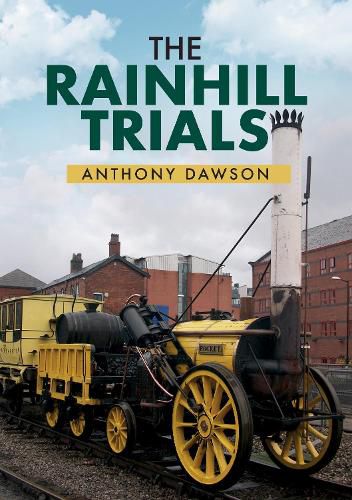Readings Newsletter
Become a Readings Member to make your shopping experience even easier.
Sign in or sign up for free!
You’re not far away from qualifying for FREE standard shipping within Australia
You’ve qualified for FREE standard shipping within Australia
The cart is loading…






During seven days in October 1829 world history was made and travel would never be the same again. Organised by the directors of the Liverpool & Manchester Railway to find the best form of motive power for their line, the Rainhill Trials shaped the destiny of the railways and proved, once and for all, the supremacy of steam power. The Rainhill Trials attracted entrants from as far afield as America (Ross Winans’s hand-cranked ‘manumotive’) as well as the weird and wonderful, like the horse-powered Cycloped.
It was a contest not without controversy: claims of corruption were levelled at George Stephenson and Henry Booth (two-thirds of ‘Team Rocket’) because they were senior officials of the sponsoring railway company; Braithwaite and Ericsson (‘Team Novelty’) only found out about the trials seven weeks before they were due to take place; and supporters of the bluff Timothy Hackworth blamed (incorrectly) the failure of his engine, the Sans Pareil, on faulty castings made by the Stephensons.
Drawing on contemporary data, and analysis of replica locomotives at the re-enacted Rainhill Trials, this book shows how the locomotive evolved between 1828 and 1830, and why Rocket was so successful.
$9.00 standard shipping within Australia
FREE standard shipping within Australia for orders over $100.00
Express & International shipping calculated at checkout
During seven days in October 1829 world history was made and travel would never be the same again. Organised by the directors of the Liverpool & Manchester Railway to find the best form of motive power for their line, the Rainhill Trials shaped the destiny of the railways and proved, once and for all, the supremacy of steam power. The Rainhill Trials attracted entrants from as far afield as America (Ross Winans’s hand-cranked ‘manumotive’) as well as the weird and wonderful, like the horse-powered Cycloped.
It was a contest not without controversy: claims of corruption were levelled at George Stephenson and Henry Booth (two-thirds of ‘Team Rocket’) because they were senior officials of the sponsoring railway company; Braithwaite and Ericsson (‘Team Novelty’) only found out about the trials seven weeks before they were due to take place; and supporters of the bluff Timothy Hackworth blamed (incorrectly) the failure of his engine, the Sans Pareil, on faulty castings made by the Stephensons.
Drawing on contemporary data, and analysis of replica locomotives at the re-enacted Rainhill Trials, this book shows how the locomotive evolved between 1828 and 1830, and why Rocket was so successful.